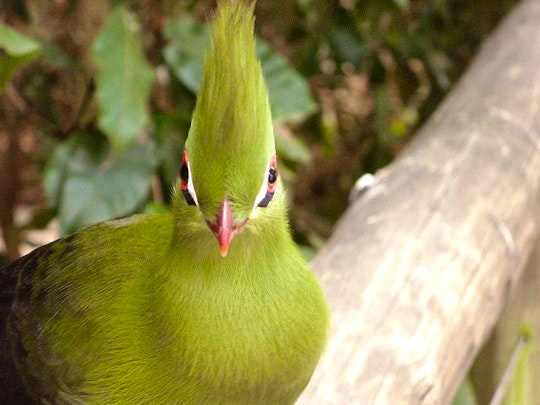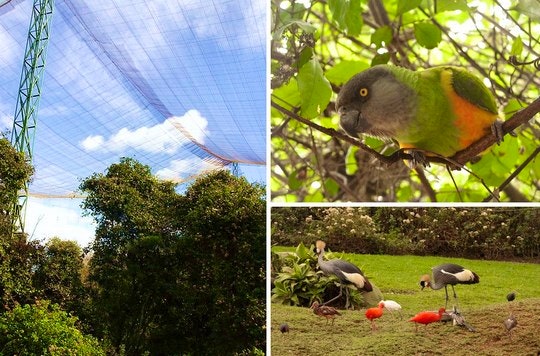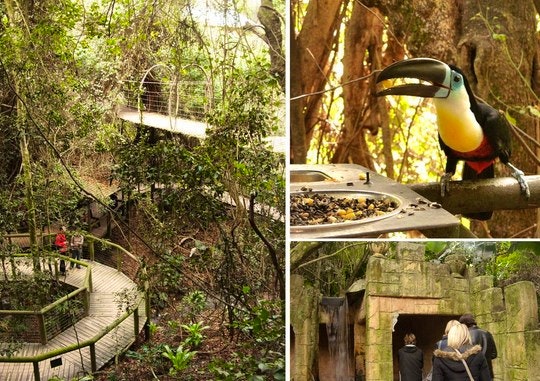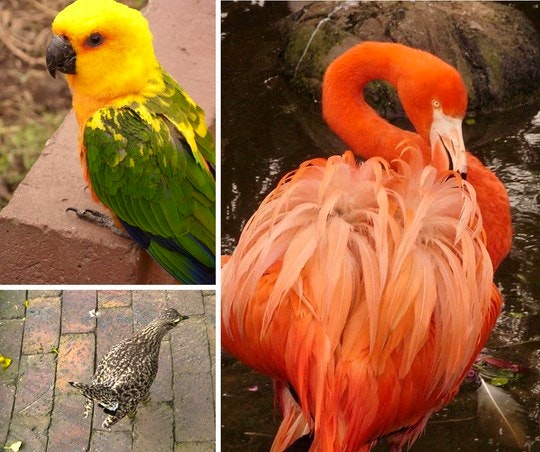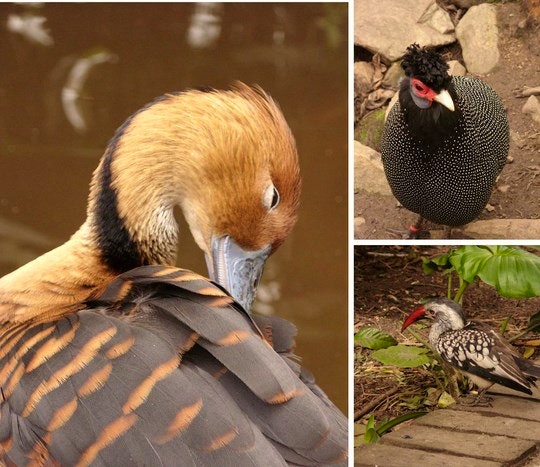As part of our Knysna Weekend, the TravelGround team visited Birds of Eden, a free-flight bird sanctuary that adjoins Monkeyland in The Crags, near Plettenberg Bay. Let me just start by saying that I’ve never wanted to own a bird. Aside from undesirable bird calls echoing through the house at 4am, I fully believe that birds should be appreciated in the wild or at least in an aviary that doesn’t resemble a prison cell. That’s exactly why I loved Birds of Eden so much. That and the awesome opportunity to take a gazillion photographs.
Although you can do a self-guided walk, Lee Decker showed as around the sanctuary, explaining how Birds of Eden is the world’s largest single free-flight aviary. The dome covers 2 hectare of land that spans over a gorge of indigenous forest. Borne from the need to create a safe environment in which to release a large collection of free-flight birds, the dome took 4 years and R9 million to complete. One of the sanctuary’s main goals is to educate the public about the adverse effects of keeping wild animals as pets, for both physical and psychological reasons. Bird owners can apply to release their pet birds into the sanctuary, after they have undergone the necessary rehabilitation. All birds have to be flying fit, socialised, and on the correct diet before being introduced into the aviary.
Walking through
The walk through aviary is exquisitely constructed with wooden walkways that weave through the lofty trees and hanging vines of the forest. The forest is 70% indigenous, and as much as the sanctuary is about protecting the birds, it can only do so by protecting their natural habitat. Due to logging, mining, agriculture, and human settlements, wildlife across South Africa are experiencing a rapid decline of natural habitats; resulting in dwindling numbers of many species. Although the forest bears seasonal fruit, Birds of Eden ensures that there is always plenty of food for every type of indigenous and exotic bird. Feeding stations are set up along the walkways where you can watch close up as birds peck at the fresh fruit and veg, germinated sunflower seeds, oats, and corn.
As you wind your way through the forest, you’ll notice a mysterious ruin with a walk-behind waterfall, a natural stream with fresh mountain water, a 20m suspension bridge made from invasive black wattle, several ponds and dams, a restaurant, and a souvenir store where you will find cool memorabilia to mark the occasion. There is also a 200-seater amphitheatre that has been used for everything from school trips and art groups, to christenings and a barefoot wedding.
Birds
Birds of Eden opened its doors to the public in December 2005 and is currently home to over 3,500 of 205 different species. Some of the exotic birds include the Scarlet Ibis, Caribbean Flamingo, Mute Swan, Golden Pheasant, Mandarin Duck, Fulvous whistling Duck, Ruppell’s Parrot, Jandaya Conure, Cockatiel, and the Channel-billed Toucan. Of the many indigenous birds to be spotted, you will more than likely see the African Spoonbill, Kenya Crested Guinea Fowl, Blue Crane, Crowned Crane, Senegal Parrot, Green Turaco, Grey Loerie, Red-billed Hornbill, and Royal/Golden Breasted Starling.
One of the funniest feathered fellows of the day was Douglas the Spotted Dikkop. Douglas was handreared, so instead of hiding in the bushes like his comrades, he enjoyed a merry stroll along the footpaths with us until he’d had simply had enough and let us pass.
Restaurant
The Jandaya Café is beautifully positioned next to a large dam, with a wall of mesh to keep curious birds from stealing your food and pooping on the furniture. Funnily enough, we had a Jandaya Conure desperately try to join us for lunch and I’m sure he thought the restaurant was exclusively named after him. I should have felt bad about ordering a chicken burger at a bird sanctuary, but any hesitations disappeared within seconds of seeing my food. By the time lunch was served, we were too starved to even think about taking photos of it. There was a distinct lull in conversation as we wolfed down our burgers and shhhlurped up our milkshakes. Very tasty!
I may not be much of a bird person, but I thoroughly enjoyed every minute wandering through the jungle-like aviary and taking snapshots of the different birds at Birds of Eden. I learned a lot too and I’m now even more proud to say that I will never, ever own a bird, because every feathered friend needs to spread its wings and fly freely.
Have a look at some of the other attractions you can experience on the Garden Route.
What do you think about having a bird for a pet?

